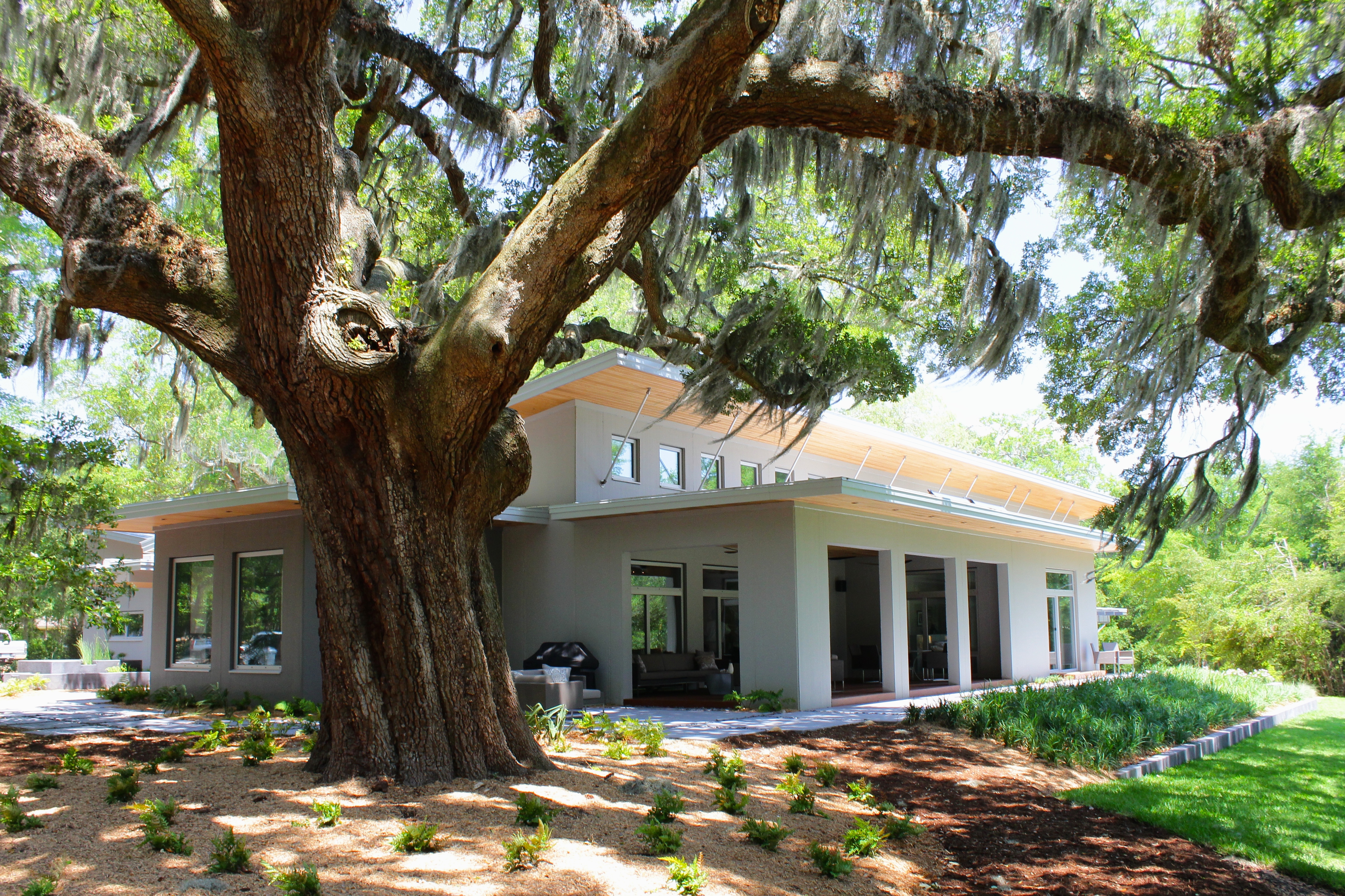Lucien Ellison has felt a responsibility to live as sustainably as possible since an ecology course opened his eyes in college, but it all it took was one beautiful view to inspire him to spend years building a house in line with one of the strictest green building standards in the world.
Ellison and his wife Jane lived only a mile away on Towles Road, but when they saw the property on Quail Run Road for the first time, they were blown away. Private and peaceful with a stunning view of Hewletts Creek framed by two sprawling, centuries-old live oaks, the couple knew they had to live there—and more importantly, they had to build a house worthy of the view.
“We bought it because it had beautiful views and beautiful old trees and we wanted to do it justice by building a super green house,” Ellison said.
Ellison began researching the latest green building science and discovered some friends were building passive houses in Chapel Hill. Ellison took Architect Kevin Pfirman to tour one of the houses under construction. The trip inspired the duo to begin working on the Wilmington’s first passive home.
Both Ellison and Pfirman had experience in green building but making the jump to passive house standards was a challenge. Ellison trained for weeks to earn designation as a passive house consultant, while Pfirman focused on reconciling the midcentury modern style the couple wanted, with plenty of windows and a split-level sleeping wing, with the energy demands of passive house standards.
The standards are among the most rigorous in green building, slashing energy use by 70 percent. Unique features like a system of 6,000-psi concrete walls and triple-paned, thermal-insulated windows and doors, along with plenty of insulation, keep Ellison’s house airtight and prevent energy leaks.
An added benefit of the concrete walls is durability, especially in an area prone to hurricanes and destructive salty air. Ellison is confident the house will be around for hundreds of years.
To keep the tightly sealed house from becoming stale, an energy recovery ventilation system constantly flushes old air out and fresh air in, providing an added benefit of improved indoor air quality.
“It’s much better than a standard home because of the ventilation. People with chemical sensitivities, people with serious allergies, can live comfortably in a passive house,” Ellison said.
Solar orientation is also important. A passive house needs to capture enough sunlight in the winter to heat the house while eliminating sunlight in the summer to keep it cool. Orienting the 5,700-square-foot structure on the property without disturbing the trees was a task that kept Ellison and Pfirman busy.
Pfirman said the house took approximately a year to design and a year to build. Although that’s a normal time frame, he said the design demanded 20 percent more work than an ordinary house.
“There was a learning curve. This is my first passive house. I could definitely do it quicker [in the future],” Pfirman said.
Ellison estimated it costs about 15 percent more to build a passive house. He said energy savings almost immediately offset the investment. His house came in at $200 per square foot.
Pfirman and Ellison stressed that any aesthetic could be achieved in a passive house, but Pfirman noted it seems appropriate to give such an innovative house an edgy design.
“If you’re going to build a house that’s futuristic in terms of energy use… I think it ought to look progressive,” Pfirman said.
Ellison’s wife worked with Robin Stanfield Designs to assure the modern midcentury design continued in the house’s interior.
The family moved in March 2014. Ellison said energy costs go down month by month as the couple learns how to tweak the systems.
Although the house is finished, Ellison said there is still plenty to learn.
“I have a much better sense of the answers than when I started, [but] when you’re talking about building science and energy efficiency and best management practices for homebuilding, it’s always a moving target. … You can’t just say, now I know and this is the way I’m going to build passive houses for the rest of my life,” Ellison said.
Ellison is ready to bring more passive houses to Wilmington through his business, Ellison Building Company. He said he already has a few interested clients, not to mention a partner.
“I hope we get to do a lot of projects together in the future. That’s the plan,” Pfirman said.
For the full story, check out the June 12 issue of Lumina News.
email [email protected]




